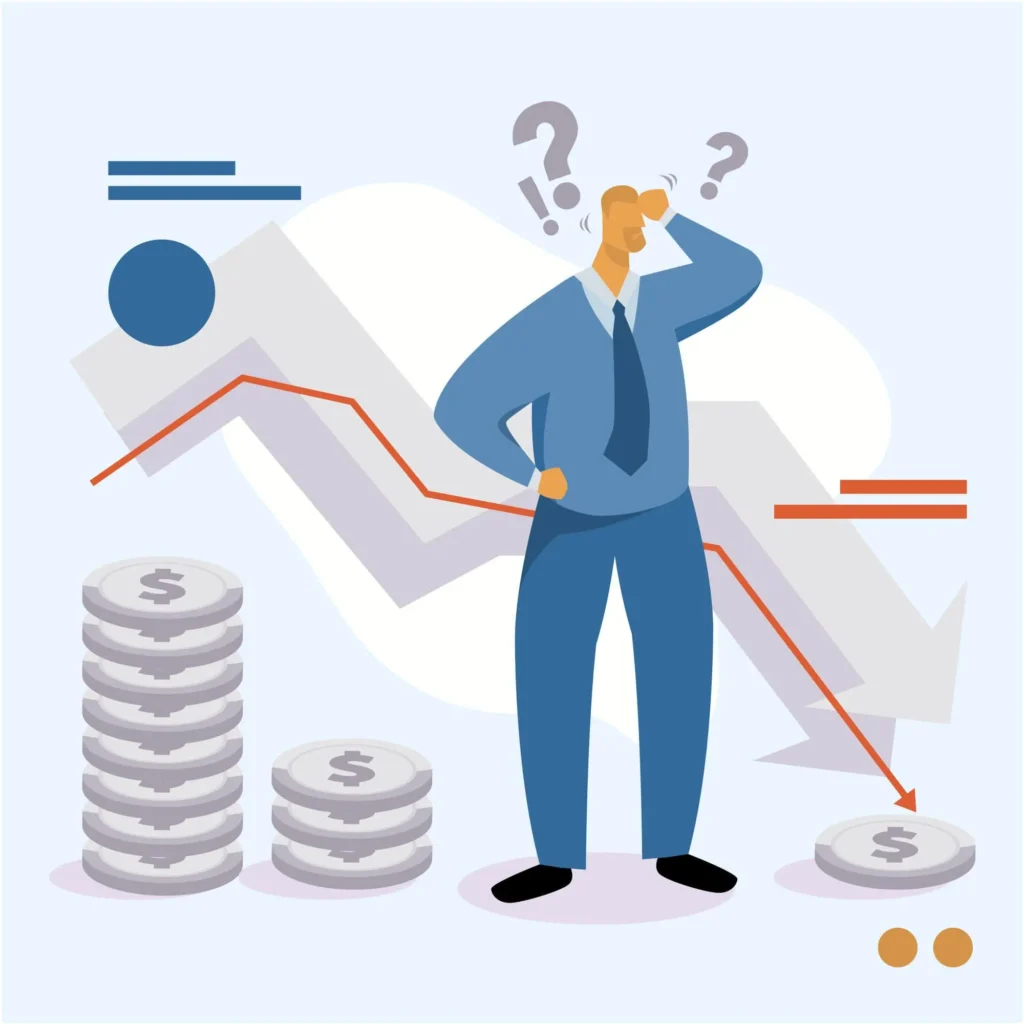Introduction:
In today’s economic landscape, two critical factors significantly influence a nation’s financial health: inflation and gross domestic product (GDP). Inflation represents the rate at which the general level of prices for goods and services is rising, while GDP measures the total value of all goods and services produced within a country’s borders. Understanding the intricate relationship between inflation and GDP is essential for policymakers, investors, and individuals alike to make informed decisions regarding economic policies, investments, and personal finances.
Fundamentals of Inflation
Inflation is the persistent increase in the general price level of goods and services over time. It erodes purchasing power, reducing the value of money. Causes include excessive demand, supply shortages, rising production costs, and expansionary monetary policies. Central banks aim to manage inflation to maintain price stability and promote economic growth.
Definition and Measurement
Inflation refers to the sustained increase in the general price level of goods and services in an economy over a period of time, resulting in a decrease in the purchasing power of money. It is commonly measured using various price indices, such as the Consumer Price Index (CPI) or the Producer Price Index (PPI), which track changes in the prices of a basket of goods and services representative of the overall economy. These indices allow economists and policymakers to quantify and monitor inflationary trends, enabling them to make informed decisions regarding monetary policy and economic management.
Causes of Inflation are:

- Demand exceeds supply
- Cost of production rises
- Monetary policy expansion
- External supply shocks
- Wage-price spirals
What are the types of inflation?
There are three basic types of inflation are:
1- Demand-Pull Inflation
Demand-pull inflation occurs when aggregate demand for goods and services surpasses the economy’s ability to produce them. This results in increased competition among buyers, leading to upward pressure on prices as demand outstrips supply, causing inflationary trends.
2- Cost-Push Inflation
Cost-push inflation arises from increases in production costs, such as wages, raw materials, or taxes, which are passed on to consumers through higher prices. This type of inflation reduces the purchasing power of money as consumers face higher costs for goods and services due to supply-side factors.
3- Built-In Inflation
Built-in inflation occurs when wage increases outpace productivity gains, leading to higher production costs for businesses. To cover these increased costs, businesses raise prices, resulting in a cycle of rising wages and prices. This self-perpetuating cycle contributes to sustained inflationary pressures in the economy.
| Business Cycle Stage | GDP Trend |
| Expansion/Boom | ↑ |
| Peak | ↓ |
| Contraction/Recession | ↓ |
| Trough | ↑ |
Effects of Inflation on the Economy

Understanding Inflation and Gross Domestic Product is essential for comprehending the effects of inflation on the economy. Inflation exerts multifaceted impacts on economic dynamics. Firstly, inflation erodes the purchasing power of consumers’ income, leading to a decrease in real wages and disposable income.
As a result, consumers may curtail spending, which can dampen economic activity and hinder GDP growth. Moreover, Understanding Inflation and Gross Domestic Product reveals how inflation redistributes wealth within the economy. Debtors benefit from inflation as they repay loans with money of lower real value, while creditors experience a decrease in the real value of their assets.
Effects of Inflation on Consumer Behavior
- Inflation reduces purchasing power
- Consumers may prioritize essential purchases
- Shifts in spending patterns occur
- Saving and investment decisions alter
- Consumer confidence may decline
- Bargain hunting becomes prevalent
- Demand for inflation-hedging assets rises
- Fixed-income earners face real income declines
- Uncertainty about future prices increases
How do you understand GDP?
Gross Domestic Product (GDP) measures the total value of all goods and services produced within a country’s borders over a specific period. It serves as a crucial indicator of a nation’s economic health, reflecting its overall economic output and productivity.
Role of Central Banks in Inflation Management
Understanding Inflation and Gross Domestic Product underscores the pivotal role of central banks in managing inflation. Central banks employ various monetary policy tools to regulate inflationary pressures and maintain price stability within the economy. Firstly, central banks monitor inflation closely, using metrics such as the Consumer Price Index (CPI) or the Producer Price Index (PPI) to gauge inflationary trends. Based on this analysis, central banks adjust interest rates to influence borrowing and spending behavior. By raising interest rates, central banks aim to curb inflation by reducing aggregate demand, thereby preventing overheating in the economy. Conversely, during periods of economic downturn or low inflation, central banks may lower interest rates to stimulate borrowing and spending, thereby boosting economic activity and inflation.

Relationship between GDP and Standard of Living
GDP and standard of living share a positive correlation, as GDP reflects a nation’s economic output, which, when distributed equitably, can lead to higher incomes, improved access to goods and services, and enhanced quality of life for its citizens.
Implications for Employment
GDP growth often leads to increased employment opportunities as businesses expand production to meet rising demand, thereby hiring more workers. Conversely, economic downturns and stagnant GDP growth can result in job losses and higher unemployment rates.
Inflation vs GDP Growth
| Aspect | Inflation | GDP Growth |
| Definition | Increase in general | Increase in the total value of |
| price level of goods | all goods and services produced | |
| and services | within a country’s borders | |
| Measurement | Tracked using indices | Calculated using various |
| such as CPI or PPI | methods, including production, | |
| Impact on | Erodes purchasing power, | Reflects overall economic |
| Economic Health | affects consumer | activity, higher growth |
| behavior, and savings | indicates economic prosperity | |
| Relationship | Can occur alongside | Positive correlation, higher |
| economic growth or | GDP growth often accompanies | |
| stagnation depending | increased economic activity |
GDP’s Role in Business Cycle Analysis
GDP plays a crucial role in business cycle analysis as it serves as a key indicator of economic activity and overall economic health. By tracking changes in GDP over time, economists and policymakers can identify the different stages of the business cycle. During periods of economic expansion, GDP tends to grow as businesses increase production and consumer spending rises. Conversely, during recessions or contractions, GDP declines as economic activity contracts, leading to reduced output and potentially rising unemployment.
Government Responses to High Inflation are:
- Implementing contractionary monetary policies, such as raising interest rates.
- Reducing government spending to curb demand-pull inflation.
- Selling government bonds to absorb excess money from circulation.
- Introducing wage and price controls to limit price increases.
- Increasing reserve requirements for commercial banks to reduce money.
- Implementing fiscal austerity measures to restore confidence in the currency.
- Negotiating with labor unions to limit wage increases.
- Encouraging savings and investment to reduce consumption and dampen inflationary pressures.
Global Perspectives
In an interconnected world, understanding inflation and GDP requires considering global dynamics. Economic events, such as trade agreements, currency fluctuations, and geopolitical tensions, impact inflation and GDP growth worldwide. Cooperation and coordination among nations are essential for addressing global economic challenges and fostering sustainable growth.
Future Trends and Challenges
Understanding Inflation and Gross Domestic Product is vital for navigating future trends and challenges in the global economy. Technological advancements, demographic shifts, and environmental concerns are shaping the economic landscape. Embracing sustainable practices and fostering innovation will be crucial for managing inflation and sustaining GDP growth amidst evolving economic paradigms and global uncertainties.
Conclusion:
In conclusion, inflation and GDP are integral components of any economy, influencing economic policies, investment decisions, and individual financial planning. A nuanced understanding of these concepts allows stakeholders to navigate through economic uncertainties and make informed choices. As we move forward, continuous monitoring of inflation and GDP trends, along with proactive policy measures, will be essential for fostering sustainable economic growth and stability.
Frequently Asked Questions:
Q1: What causes inflation?
Inflation can be caused by various factors, including increased demand for goods and services, supply shortages, rising production costs, expansionary monetary policies, and external shocks such as changes in oil prices or international trade dynamics.
Q2: How does inflation impact consumer behavior?
Inflation can influence consumer behavior by reducing purchasing power, altering spending patterns, encouraging saving or investment in inflation-hedging assets, and affecting consumer confidence and sentiment.
Q3: What are the tools used by central banks to control inflation?
Central banks use a range of monetary policy tools to control inflation, including adjusting interest rates, conducting open market operations, setting reserve requirements for banks, and employing unconventional measures such as quantitative easing.
Q4: What are the main components of GDP?
The main components of GDP include consumption (C), investment (I), government spending (G), and net exports (exports minus imports, NX).
Q5: How does GDP growth affect employment rates?
Generally, higher GDP growth rates are associated with lower unemployment rates, as increased economic activity creates more job opportunities. Conversely, sluggish GDP growth may lead to higher unemployment rates.
Q6: Is there a direct relationship between inflation and GDP growth?
The relationship between inflation and GDP growth is complex and can vary depending on various factors such as the stage of the economic cycle, the cause of inflation, and policy responses. In some cases, high inflation may coincide with high GDP growth, while in others, it may hinder economic expansion.
Q7: What role does GDP play in international trade?
GDP serves as a measure of a country’s economic output and overall economic health, influencing its competitiveness in international trade. Countries with higher GDPs often have greater purchasing power and may be able to export more goods and services.








